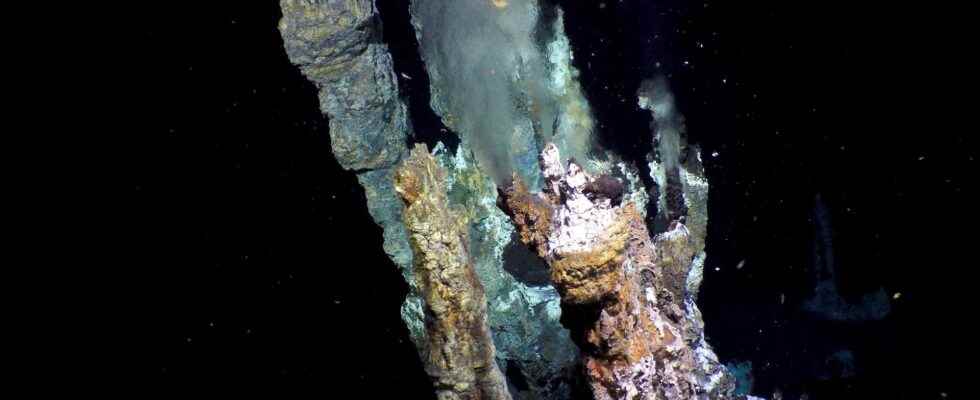The study of the ocean floor always brings its share of new discoveries. A new hydrothermal field located in the Pacific Ocean, 2.5 kilometers deep, and showing particularly intense activity has indeed been identified.
You will also be interested
[EN VIDÉO] Ocean hydrothermal vents surrounded by giant worms We see in this video hydrothermal vents found on the east pacific ridge. They are surrounded by colonies of the famous giant worms called Riftia pachyptila.
The bottom of the oceans remains to this day one of the least explored territories of our planet. Far from being the vast plain that we imagine, the ocean floor is like the terrestrial landscape, extremely diversified and marked by important reliefs, among the most important on the globe. Ridges, ridges, pits, fractures, canyons, volcanoes…, the ocean floor effectively records all of the tectonic and volcanic events which are continuously occurring and which testify to the dynamics of our Planet.
Chimneys at the bottom of the ocean
The first maps of the ocean floor only date from the 1950sdate on which the theory of tectonic plates starts toimplant gently within the scientific community. It is on this occasion that we discover the existence of oceanic ridges, immense chains of underwater volcanoes which stretch in the middle of all the oceans of the globe and represent the place where the new oceanic crust forms. Since then, new discoveries have been frequent and have made it possible to better understand the dynamics of this environment, which lies several kilometers below the surface of the water.
Among the great advances of recent decades, the discovery of hydrothermal vents spitting mineral-rich fluidsin sulfide and methane at temperatures sometimes over 300°C is certainly one of the most significant. It has made it possible to better understand the circulation of fluids within the oceanic crust, the evacuation mechanism of heat internal Earth, water-rock interactions… The discovery of “black smokers” as they are often called also represented a major advance in biology since scientists were surprised to discover large colonies of animals and of bacteria living in this extremely hostile environment. The study of hydrothermal fields thus largely contributes to the progress of research on the important question of the origin of life.
Fluids over 430°C out of the axis of the ridge
The majority of the hydrothermal fields discovered are generally located at the level of the axis of the oceanic ridges, like the Lucky Strike website, lying 1,700 meters deep on the Mid-Atlantic Ridge. This is where the main magmatic activity takes place. The rise of magma opens fissures in the ocean bedrock, into which seawater infiltrates, warms and charges minerals and gas dissolved before to emerge at the level of hydrothermal vents.
But researchers have just discovered a new hydrothermal field, in a more unusual environment. The new site was located in the Pacific, 2,500 meters deep, 321 kilometers off the west coast of Mexico, at the level of the East-Pacific ridge. But the site, vast as a football field, is not located exactly on the axis of the ridge as usual, but on the flanks. This is referred to as an “off-axis” site. This new and important hydrothermal field consists of many chimneys, rising 10 to 12 meters high and spewing huge quantities of a black fluid at more than 430°C. Temperatures much higher than anything that had so far been observed on this ridge.
For the researchers behind the discovery, this kind of off-axis site could be much more common than we think, which would impact current hydrological models of hydrothermal systems, as well as the supposed distribution of heat sources. and D’chemical elements in the ocean. The results of this study have been published in the journal Pnas.
Interested in what you just read?
